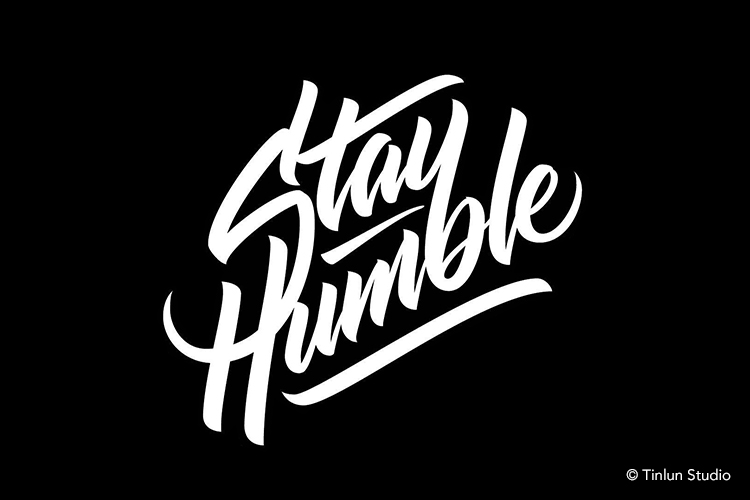What is lettering?
Lettering is essentially an art form that includes creating illustrations by using elements such as alphabets and numerals or any type of character or phrase. It is nowhere near the ordinary writing that most of us do. The aim of this technique is to maintain consistency and legibility.
An example of lettering is the fancy letters on posters that display inspirational quotes or on signs. Despite common beliefs, calligraphy and lettering are actually quite different.
Calligraphy vs. Lettering:
Calligraphy concentrates more on the movement of the pen and displays writing at its most graceful, whereas, lettering is mostly drawing where the primary elements are alphabets and numerals and an artist can use as many tools and materials he/she requires but different tools will yield different results and as such will require various skill sets to be mastered.
Below are the basic materials required for a lettering artist:
Ruler:
First basic tool required is a ruler. It is required to plot the shape of your piece before producing the sketch for your letterforms, make grids, and block off the letters so that they are spaced out appropriately.

Paper:
An artist will need something to draw on; mostly three types of paper are used:
- Plain printer paper: Less formal paper, mostly used for the first stages of a concept and for rough drafts. This paper is cost effective and can be used for brainstorming; however, the paper is acidic and can turn yellow over time. Hence, it is not advisable to use it for preserving any kind of art.
- Bristol board: This tool is an excellent choice if you ever want to give your piece some weight and durability; it is also perfect for framing.
- Grid paper: Not only is this paper easily available but it is also affordable. If you are particular about straight lines and finalizing your art onto a computer, then, the grid paper is perfect for saving time during the blocking stage.
Pencils and Pens:
- For the initials stages, you can use basic lead pencils, to just jot down your ideas and rough sketches, one can also use ballpoint pens for quick sketches and any kind of informal projects.
- For transitional inkers archival markers are a solid choice, the only drawback being, they just provide the artist with one line weight and this can get quite expensive
- Now we move on to dip pens. They are high maintenance, need to be cared for regularly. But the result, in the end, is very professional and completely worth it.
The steps involved in lettering are as follows:
- Picking out the fonts you would like to use, or creating a rough template beforehand.
- Measuring and blocking out the piece so that lettering is even and spaced out as the artist would prefer it.
- You hand ink your piece and scan it, then finish in a vector program
Hand lettering is basically like any other drawing but with alphabets and numerals as your basis and font sheets as your guide. Lettering has taken the publishing world by storm and has developed a bridge between design and words. The art of lettering speaks volumes and the concept of lettering can help a person see the space between the letters at the same time evoke a nostalgic and calming practice.
